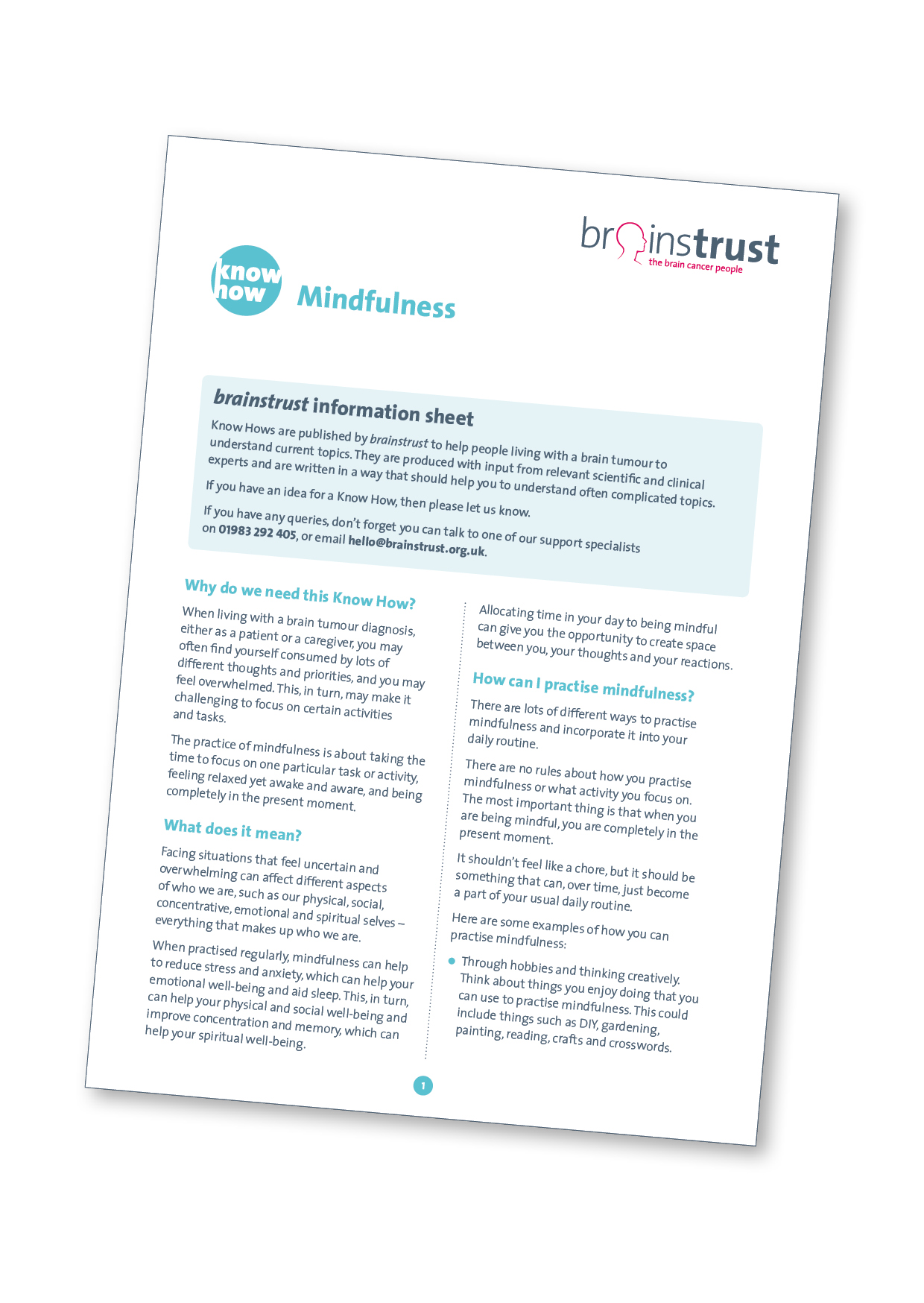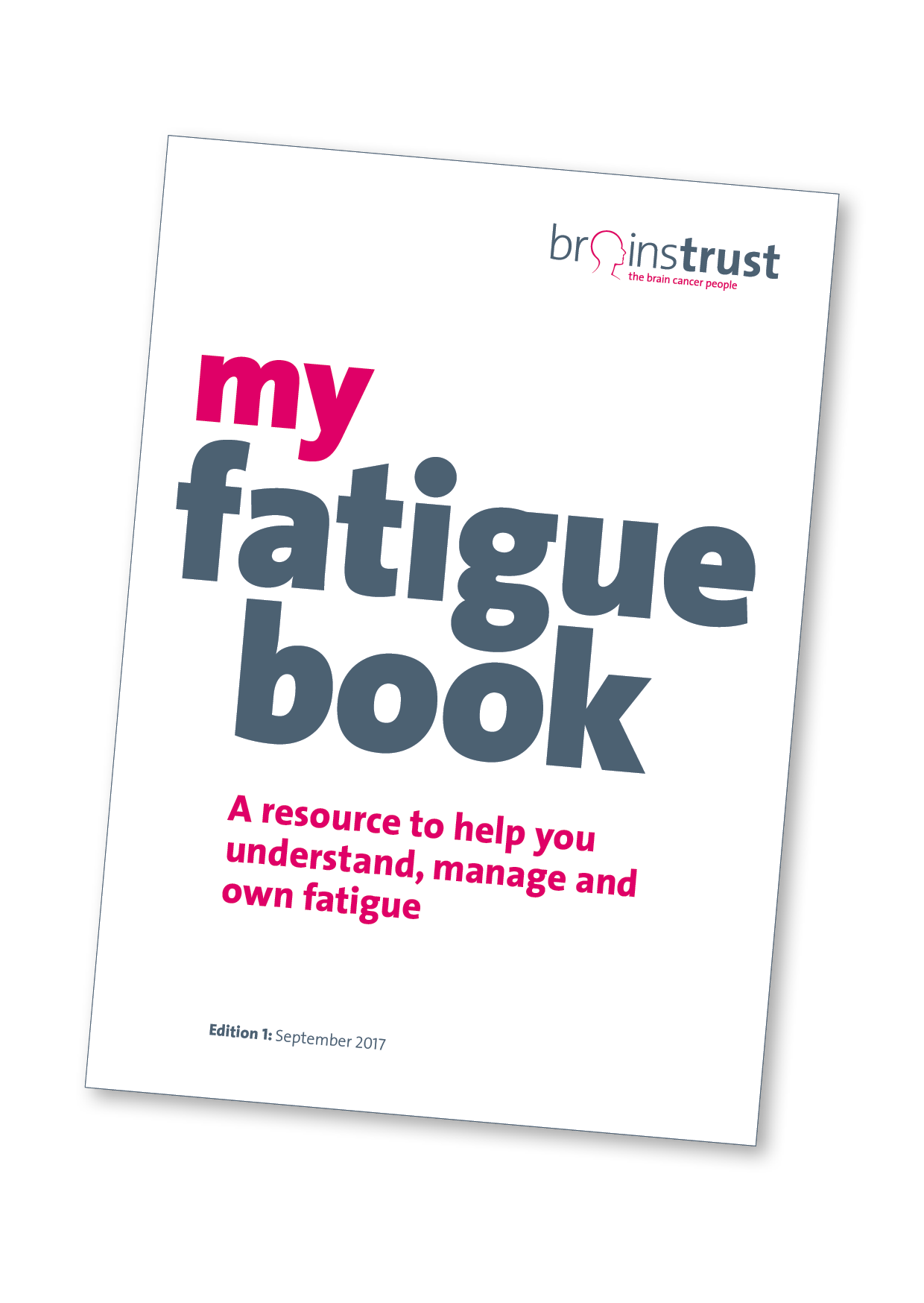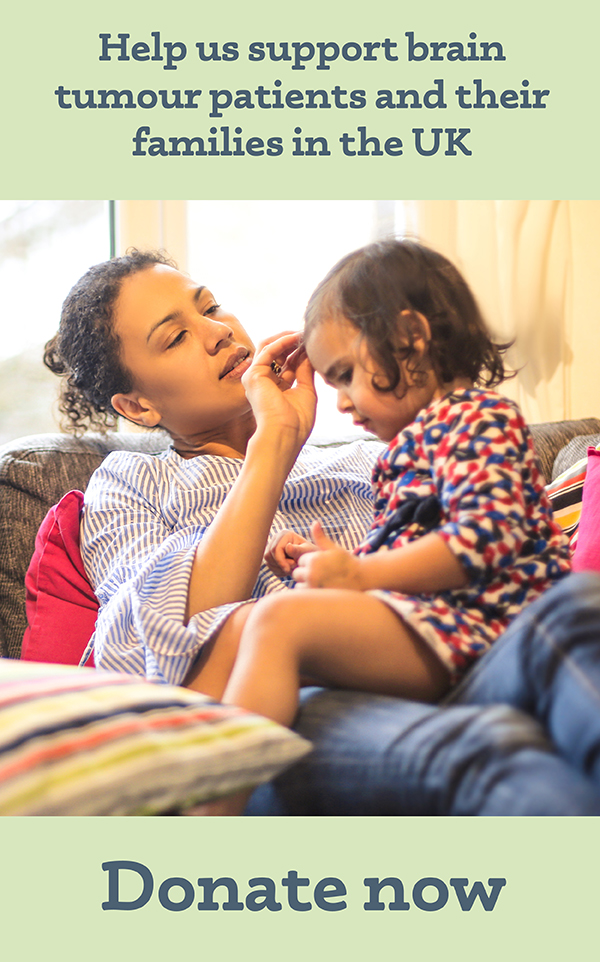Positive behaviour changes
Living with a brain tumour diagnosis impacts many different aspects of your life. This can include brain tumour related behaviour changes, which can impact how you may react to certain situations. Here you will find some strategies and resources to help you manage changes in behaviour, maintain positive behaviour and achieve a good quality of life.
Quality of life
When things get on top of us and we feel overwhelmed, it can impact our feelings, thoughts and behaviours.
Using proactive strategies can help to improve your quality of life and help you to develop and shift your behaviour to help you feel more in control and on top of things.
How can you do this?
Book a coaching conversation with a brainstrust support specialist.
We know that when you hear the words “you have a brain tumour”, you need support from people who not only understand the fear, confusion and isolation, but who can empower and resource you to manage these feelings.
All of our support specialists are trained coaches. Coaching focuses on understanding your personal priorities and developing strategies and clarity to achieve a better quality of life. We don’t give advice, because we understand that every situation is unique. What we do is help you work through the biggest challenges of life with a brain tumour diagnosis. You can access this support through our helpline on 01983 292 405, or email support through our helpline, or email support from your local support specialist.
Helpline number: 01983 292 405
Take a look at your diet
It is well known that there is a strong relationship between mood and food. Unhealthy eating patterns and nutritional imbalances can cause mood swings and increased fatigue. Without a steady source of fuel from the foods we eat, our minds and bodies don’t function well.
Taking a look at your diet and fluid intake and seeing what changes you could implement could help with how you may be feeling. A combination of a sensible diet which includes food from all groups – lean protein, complex carbs and a small amount of healthy fats, along with rest and exercise can help you to maintain a healthy weight and give you more energy.
We run online Thrive workshops on diet and nutrition. Take a look at our events calendar to book a spot at any of our upcoming events.
Accept the way you feel
Acceptance helps us to come to terms with the difficulties that come with life and what is out of our control, whilst at the same time committing to action that will improve our quality of life. Read more about acceptance here.
Build mindfulness into your day
 The practice of mindfulness is about taking the time to focus on a particular task or activity, feeling relaxed yet awake and aware, and being completely in the present moment.
The practice of mindfulness is about taking the time to focus on a particular task or activity, feeling relaxed yet awake and aware, and being completely in the present moment.
Take a look at our Mindfulness Know How to help you explore how you can build mindful practices into your daily life.
Your environment and surroundings 
A brain tumour diagnosis can impact how you view your home and surroundings. Simple tasks that used
to come so easily may now feel like a bigger challenge, and you may feel like you need more time and space to yourself. By making some simple adaptations to your environment, this can help give you the space and time you need for things that are more important to you.
You can find some tips and strategies to help you organise your environment and create a sanctuary in our fatigue resource.
Self-help strategies
Self-help is exactly that – a toolkit at your fingertips, that you can ‘help yourself’ to, to deal with a situation as it arises. Setting aside some time in your day to prioritise your own needs will give you the space you need to help deal with the challenges that come with living with a brain tumour diagnosis.
There are many benefits to self-help for people who are living with a long-term condition, illness or disability, as well as their caregivers. People can suffer less pain, anxiety, depression and fatigue, have a better quality of life, be more active and independent and live longer.
Here you will find some suggestions of self-help strategies that you can use:
Pleasurable activities
In the busyness of our lives, sometimes we lose sight of pleasure. We are so busy trying to sort, manage, orchestrate, drive that we forget we need a balance.
Make a list of things you like to do that make your heart sing. These will give you energy. Many do not use much energy; many are actually quite small things, like sitting with a favourite piece of music or feeling the sun on your face, listening to birdsong or having a cuddle.
Look at your list often to remind yourself and promise to do one every day.
Dealing with the overwhelm
When situations change, it is hard to know which way to turn. Things that you did so easily suddenly become overwhelming. If you are a person living with a brain tumour, there may also be changes in your ability to function as you used to. Some things are within your power to change. Some are not.
Living with uncertainty
When you have been diagnosed with a brain tumour, you feel that your life is less secure, more fragile than it once was. You find yourself living in a space where nothing seems certain anymore. It’s a scary place to be, and it can leave you feeling out of control and overwhelmed.
This Know How will help you get comfortable with living with uncertainty.
Reactive strategies
Sometimes there may be the need for a more reactive approach to help with any challenging situations that you may be facing as a result of your brain tumour diagnosis. This applies to caregivers as well.
If you or someone close to you has identified changes in your behaviour, there are certain steps you can take to try and help to manage and reduce instances of out of character behaviour.
A good starting point can be to put some simple measures in place. These can include:
- Ensuring continued social relationships
- Encouraging engagement in meaningful activities
- Reducing unnecessary noise and clutter
- Maintaining a comfortable sleeping environment
- Developing a structured day.
You can find details of reactive strategies in our Behaviour and Personality Change resource, which you can download here: These strategies have been taken from our Behaviour and Personality Change resource, which you can download here.





